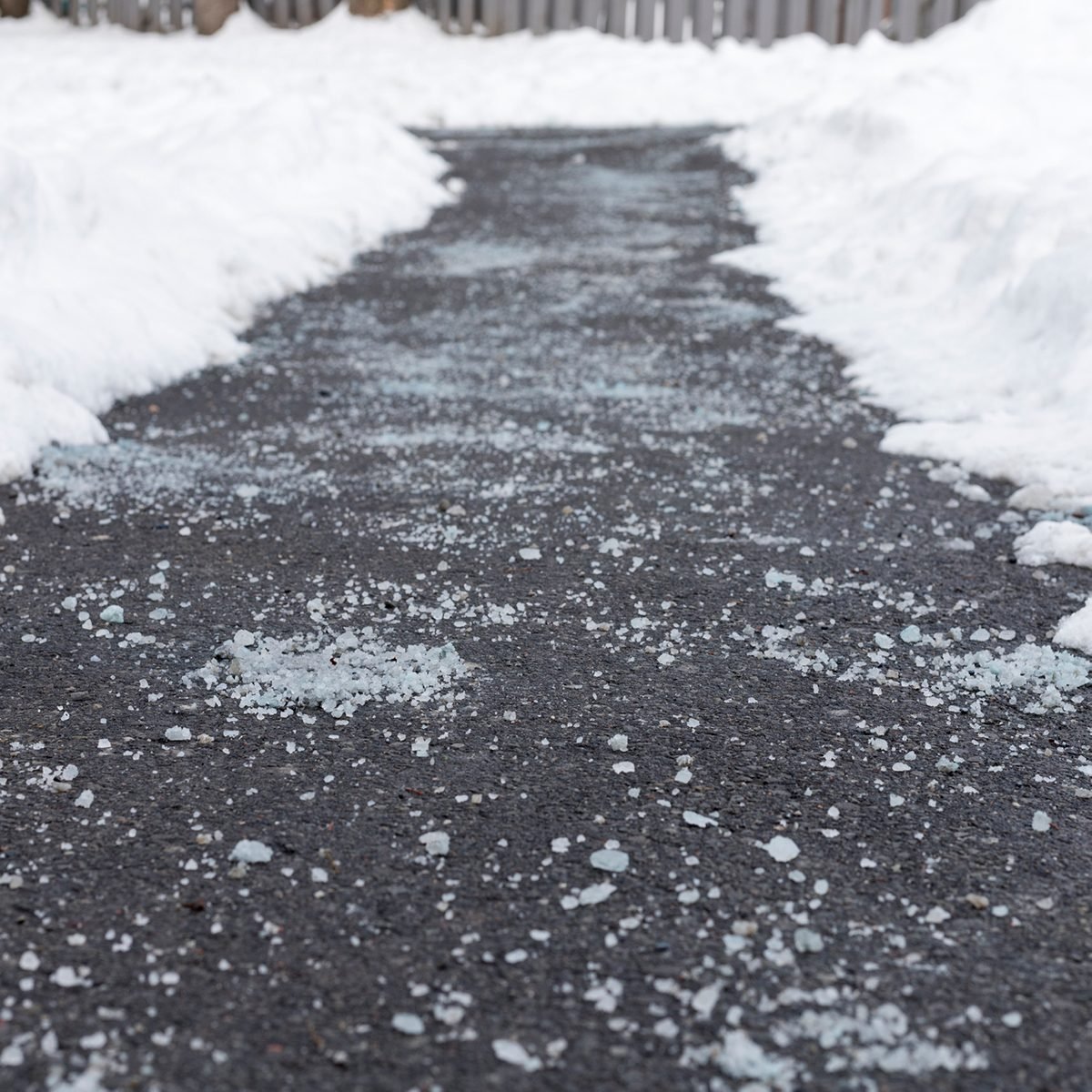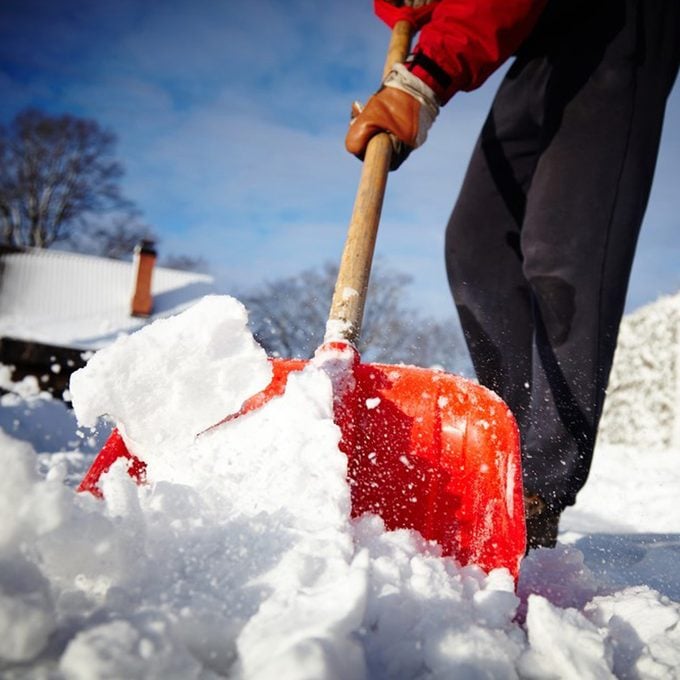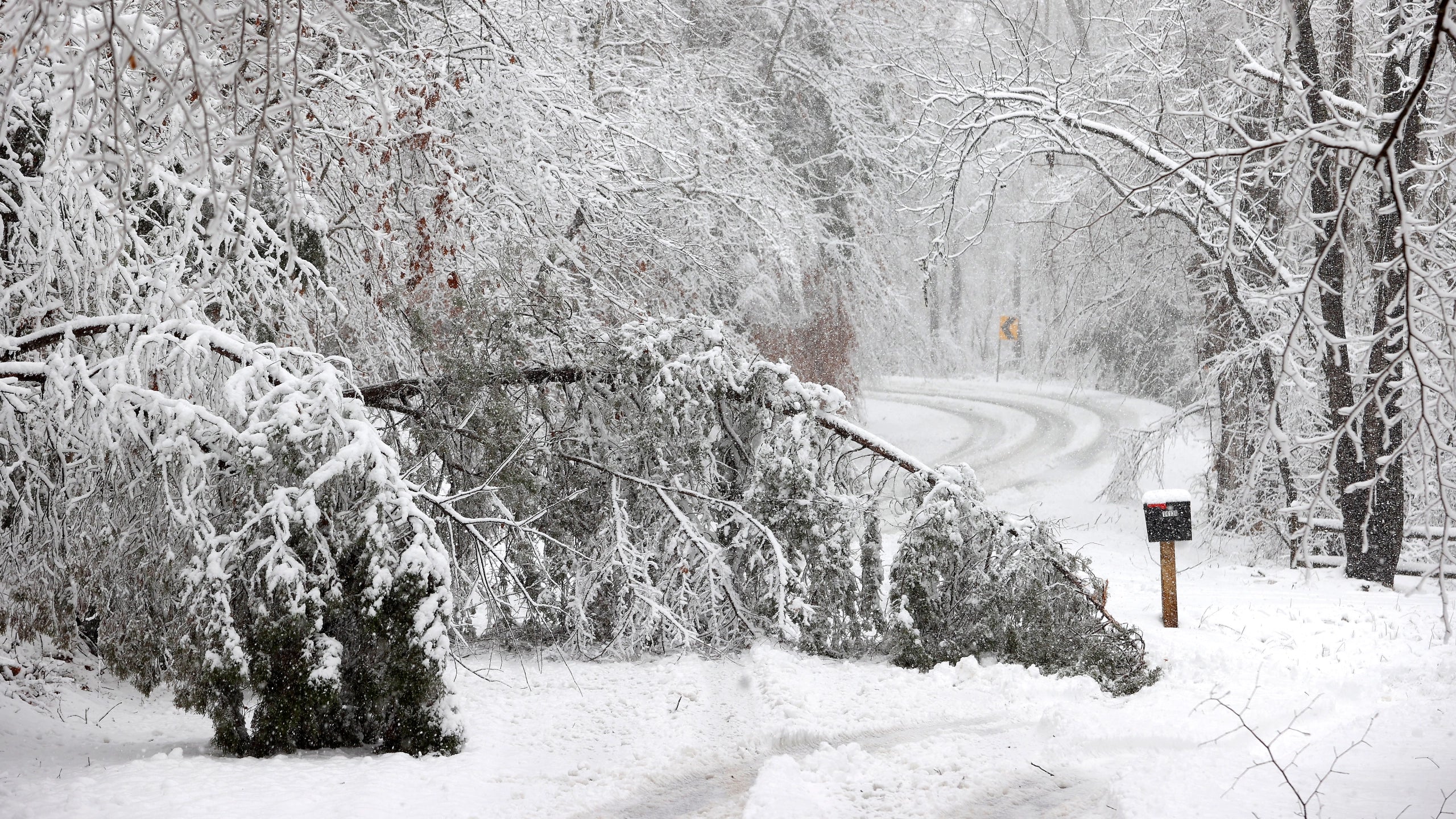A winter storm can be an exciting event, but it comes with some risks. A slip and fall can be a serious accident that can lead to an injury. Ice melt products are designed to help keep you safe by preventing slips and falls on sidewalks, driveways, decks, and stairs. But before you use any product around your home, make sure you know how it works and how to choose the right one.

Photo by: IRYNA TOLMACHOVA/GETTY IMAGES
Choosing the right Ice Melt and application method
Ice melt is a good way to prevent slips and falls on your residential property and it’s important to choose the right product for your needs. Before purchasing an ice-melt compound, read labels carefully and look for one that is safe for those in your household. As well as ensuring it the appropriate type of ice melt for the surface you are using it on driveway, deck, or sidewalk. For example, if you need something that will work well on concrete and stone surfaces then your best bet will be salt-based products like Diamond Crystal® Rock Salt or Morton® Road Salt Plus Ice Melt.
The first step to finding the right ice melt for your surface is knowing what you need to melt. Ice melts are designed to work in different climates and temperatures, so it's important that you choose a product that works best for your area. As well as using it properly and making sure you have the right equipment to ensure you're getting the best results. The most effective and time saving way to distribute ice melt is with a granular spreader. Use the right amount of product for consistent coverage. You can save money and time by using a spreader to measure the correct amount for your sidewalk or driveway. One-fourth cup per 20 square feet is a good starting point, but more than 1/4 cup may be needed if temperatures are well below zero or if it’s windy out. Be sure to avoid applying less than one-fourth cup, as it won’t provide adequate coverage and will likely clump together when you apply it, making it difficult to spread evenly on your sidewalk or driveway. Another thing to consider is how much time you want between applying the product and its effectivity. Some people prefer more instant results. While others want as little cleanup as possible after they're done melting their sidewalks or driveway.
Application Tip: Often folks will use rock salt which can damage plants if left on them long enough or when applied too liberally through overuse of the product or misapplication.
Purchasing Tip: Customer reviews can help with this task: if other customers who live in similar climates recommend a particular brand of ice melt, then odds are good that this brand can handle your situation as well.

Photo by: Tomahawk Power
Don't apply more than what’s recommended
Ice melt can be a useful tool for keeping your sidewalks clear of snow and ice, but only if it's used appropriately. If you apply too much deicer at one time, you'll run the risk of creating an icy mess. This is especially true if there is snow on top of the ice melt or when it's still wet from application. The excess product will freeze into tiny pieces that aren't easily removed by scraping or sweeping; they'll remain in place until they're able to melt away due to exposure to heat or sunlight or until they're worn down by foot traffic.
After applying ice melting chemicals onto your sidewalk, make sure that it gets a chance to dry before nightfall so that there isn't any residual moisture left over from its application process; otherwise this could cause premature freezing conditions such as frost heaves, which occur when water seeps into cracks within concrete slabs underneath sidewalks due to lack of drainage systems—or even worse yet: creating slippery patches where no such patches existed before!

Photo by: ANNA_KUZMINA/SHUTTERSTOCK
Clean up
Once you've shoveled the ice away, be sure to sweep up any excess ice melt. It's much easier to do this while it's still on a driveway or sidewalk than when it has frozen into a solid chunk of ice. You can use a broom or leaf blower to sweep up the remaining granules. Refrain from using a shovel or rake as you'll damage them and need to replace them.










